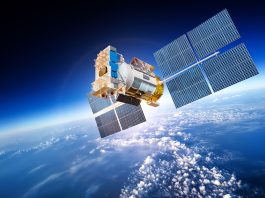As agriculture faces mounting challenges from climate change and global food demand, Earth observation (EO) technologies – using satellite imagery and remote sensing – are transforming how we grow food.
EO empowers precision agriculture, helping farmers monitor crop health, soil moisture, and environmental conditions in real time.
But its potential goes further: could EO lead the next wave of innovation in sustainable farming?
Earth observation in agriculture explained
Earth observation uses satellites and remote sensing to collect data about agricultural landscapes. By analysing crop health, soil conditions, and land use, EO equips farmers with the tools for precision farming – maximising yield while minimising waste.
Techniques like multi-spectral imaging and NDVI (Normalised Difference Vegetation Index) help detect plant stressors such as disease and nutrient deficiencies. This allows for timely interventions that enhance productivity and reduce the need for chemical inputs.
Additionally, EO provides insight into environmental variables – weather, pest activity, and irrigation needs – supporting smarter decisions that build resilience in the face of climate change.
Boosting yields with satellite insights
Satellites enable real-time monitoring of crops, offering farmers precise data on plant health. Imaging technologies – especially NDVI – identify areas needing attention, enabling targeted use of water, fertilisers, and pesticides. This precision boosts yields while reducing waste.
Satellite-driven models can also predict harvest outcomes with high accuracy (R² values up to 0.71). These forecasts allow farmers to plan ahead, manage risk, and optimise returns.
Monitoring water, weather, and soil from space
EO gives farmers a bird’s-eye view of the vital elements of agriculture – water, weather, and soil.
- Soil moisture data informs irrigation, reducing water waste.
- Weather forecasting helps plan planting, fertilising, and pest control activities.
- Soil analysis supports crop rotation and fertilisation strategies, maintaining long-term soil health.
Together, these insights enhance resource management, lower costs, and promote sustainability.
Reducing waste and environmental impact
EO technologies help reduce agriculture’s environmental footprint through smarter resource use.
By enabling precision application of water, fertilisers, and pesticides, EO cuts input waste and limits chemical runoff.
Hyperspectral imaging further supports sustainability by monitoring soil nutrients, helping reduce dependency on synthetic fertilisers. These capabilities align modern agriculture with global conservation goals.
Key Contributions:
- Resource optimisation
- Early stress detection
- Sustainable nutrient management
- Lower environmental impact
Predicting pests, droughts, and crop failures
EO allows early detection of threats like droughts, pest outbreaks, and crop disease by analysing vegetation indices such as NDVI.
Predictive models that blend historical and current satellite data enable timely interventions, reducing losses and increasing resilience.
This proactive approach empowers farmers to stay ahead of environmental stressors, preserving crop yields and supporting food security.
Empowering farmers with data
Access to satellite data is transforming traditional farming into precision agriculture. Farmers now receive real-time insights into soil conditions, crop health, and weather risks, enabling faster, smarter decisions.
With programmes like the EU’s Copernicus, EO data is increasingly accessible, benefiting farms of all sizes.
Key benefits:
- Real-time Crop monitoring
- Smarter input use
- Higher yield predictability
- Data-driven decision making
How AI and remote sensing are shaping agricultural technology
The combination of AI and EO is revolutionising farm management. AI analyses vast datasets from satellite imagery to forecast yields, identify crop stress, and guide resource use more efficiently.
Multi- and hyperspectral imaging detects changes in plant and soil conditions. Combined with AI, this enables early interventions and sustainable practices, such as optimised fertiliser use and better water management.
Together, these technologies offer farmers near-instant insights and long-term planning tools that drive both profitability and sustainability.
Cultivating a smarter, sustainable future
Earth observation is no longer a futuristic concept – it’s a practical, powerful tool reshaping how we grow food.
By combining satellite data, remote sensing, and AI-driven analytics, farmers are gaining the insight they need to make smarter, faster, and more sustainable decisions.
From boosting yields and conserving water to predicting crop threats and reducing environmental impact, EO is unlocking a new era of precision agriculture.
As these technologies become more accessible, especially to smallholder farmers through open-data initiatives, the benefits will extend beyond productivity to global food security, climate resilience, and ecological stewardship.
Earth observation isn’t just helping us adapt to the challenges of today – it’s laying the groundwork for a more resilient, efficient, and sustainable food system for generations to come.





